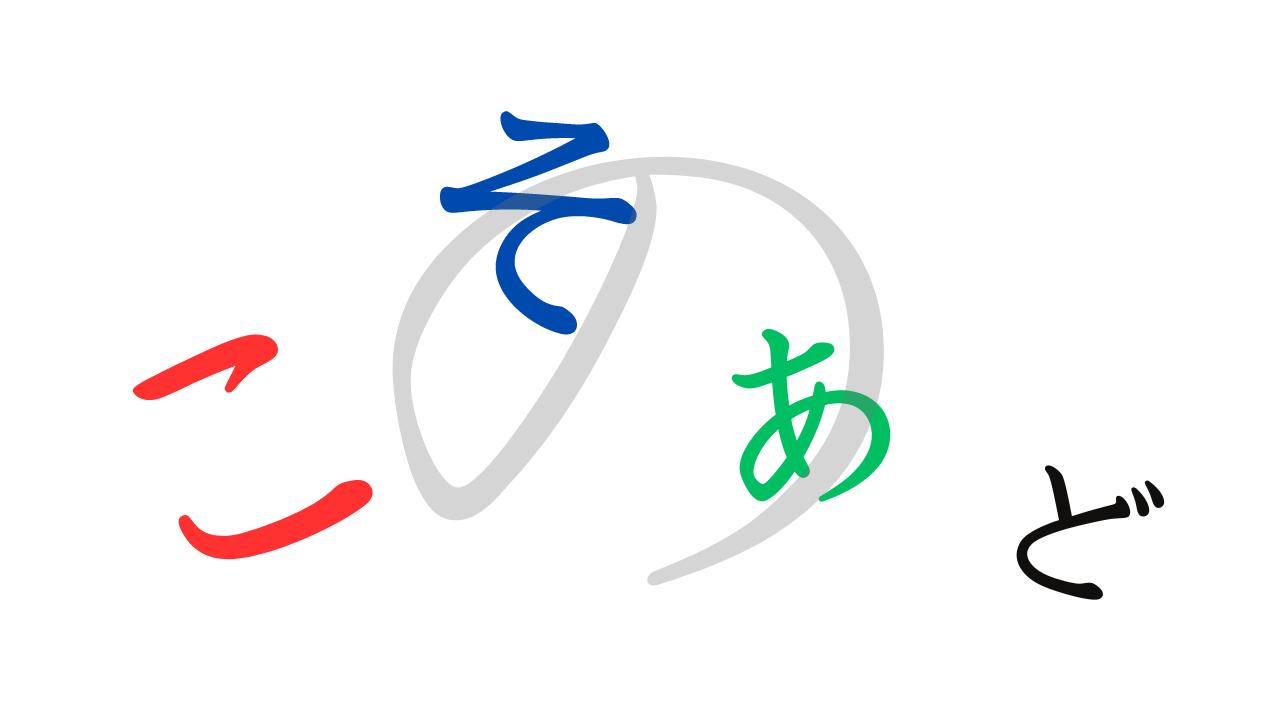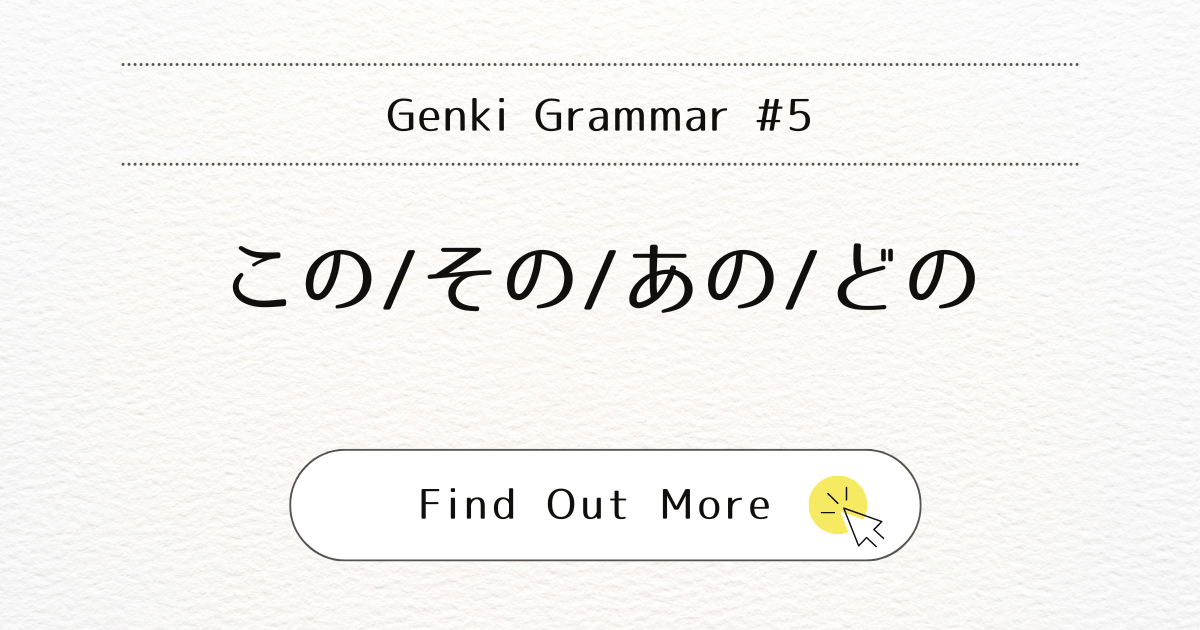
Introduction
In Japanese, just like in English, the way you refer to objects or people changes based on their relationship to the speaker and the listener. Today, we’ll explore how to use “kono,” “sono,” “ano,” and “dono” when they are paired with nouns to clarify these relationships.
What It Means
- この (kono) is used when the noun is close to the speaker. Think of it as “this” in English.
- その (sono) is used for items close to the listener, similar to “that.”
- あの (ano) is used for items that are distant from both the speaker and listener, similar to “that over there.”
- どの (dono) is used when asking about a noun from a set of unknown items, equivalent to “which” in English.
When You Use It
These terms are very useful when you want to point out where things or people are in relation to the speaker and listener. They help make conversations clear, so everyone understands what is being talked about.
Quick Guide to Using These Terms:
Below is a table that shows how to use these words in Japanese. It explains which words are used on their own and which are used with a noun. It also shows what other words (particles) typically come after them.
| Category | Term | Particles | Description |
| Demonstrative Pronouns: on their own | これ (kore) | followed by ‘は’ (wa) | Close to the speaker |
| それ (sore) | followed by ‘は’ | Close to the listener | |
| あれ (are) | followed by ‘は’ | Far from both people | |
| どれ( dore) | followed by ‘が’ | Used in questions to specify one among many | |
| Demonstrative Adjectives: used with nouns | この + noun (kono noun) | followed by ‘は’ | Close to the speaker |
| その + noun (sono noun) | followed by ‘は’ | Close to the listener | |
| あの + noun (ano noun) | followed by ‘は’ | Far from both | |
| どの + noun (dono noun) | followed by ‘が’ | Used in questions to specify one among nouns |
Examples
- この本はいくらですか? (Kono hon wa ikura desu ka.) – How much is this book?
- その本は三千円です。 (Sono hon wa sanzen en desu.) – That book is 3,000 yen.
- あの学生はアンさんです。 (Ano gakusei wa An san desu.) – That student over there is Ann.
- どの学生がアメリカ人ですか? (Dono gakusei ga Amerika jin desu ka.) – Which student is American?
Note
- These terms (Kono, sono, ano, dono) must be followed by a noun, as they cannot stand alone.
- The term ‘dono’ requires special attention with its associated particle. Unlike ‘kono,’ ‘sono,’ and ‘ano,’ which typically use ‘wa’ (は), ‘dono’ uses ‘ga’ (が) because it is a question word and cannot be paired with ‘wa.
Conclusion
Understanding how to use ‘kono,’ ‘sono,’ ‘ano,’ and ‘dono’ can greatly enhance the clarity and precision of your Japanese. These words show how close or far things or people are from the speaker and listener.



